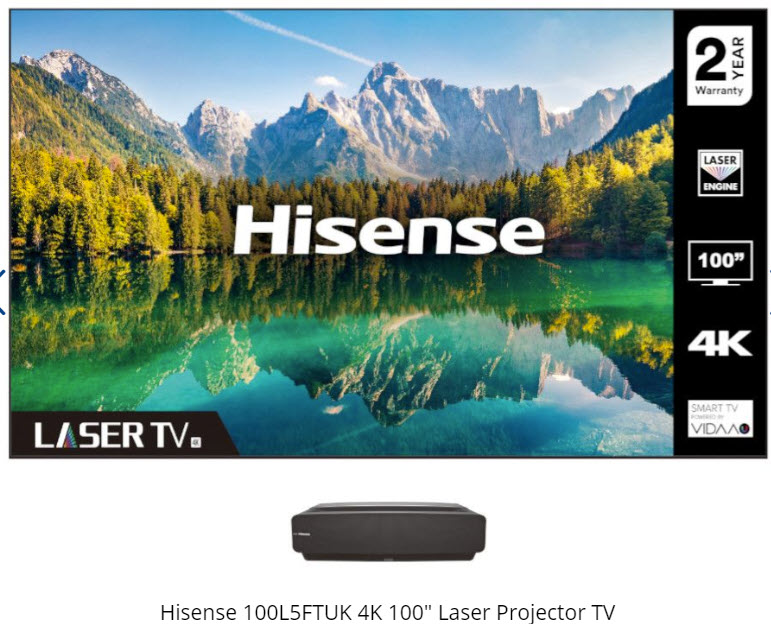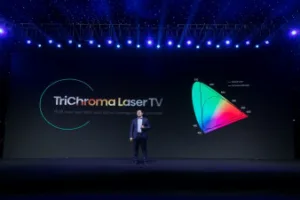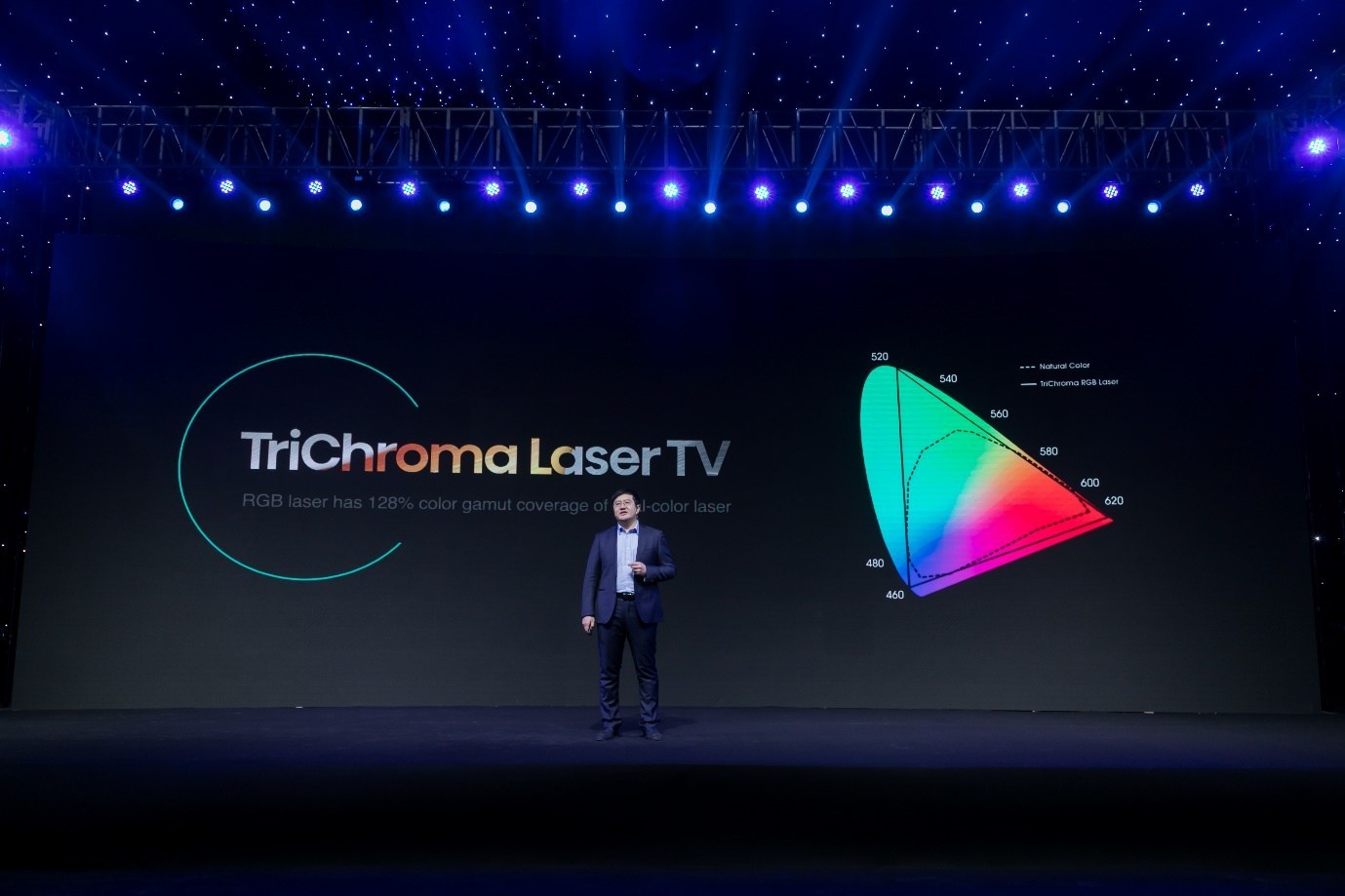Well, I’m still working through the TV news from CES, but at the moment, I haven’t seen much that’s really exciting or interesting from the major brands. There are bigger and larger OLEDs, some interesting developments in miniLED (with the reduction in thickness as, probably, the most significant point, as we can’t judge the quality over a video presentation). But there was something of a surprise to me from Hisense.

Hisense of China spent most of its press time at CES talking about its DLP-based large screen laser projectors that it now rates as being suitable for images up to 300″, after the category was introduced with a target of creating 100″ displays. The category really started to gain traction in China and has developed a lot. I first saw the concept being demonstrated by Coretronic (the factory behind the Optoma brand) at Infocomm in 2015. (Coretronic Sells Laser TV in China). The technology has been shown regularly at CES and IFA, but hasn’t really gained share in the US or European markets.
Hisense pointed out that the top global TV brands, Samsung, Sony and LG have all entered the category, although Hisense claims to have three of the top ten selling models in China in the category.
Clients adopting the technology have been very happy with the use of the sets, with the Consumer Electronics Survey Office of the China Electronics Chamber of Commerce reporting that survey results showed that laser TV had the highest recommendation rate at 70%, compared to an industry average of 54%.
The company also claimed that using the firm’s 100″ fresnel-based ambient light rejecting screen, the on-screen brightness is 430 cd/m². The TriChroma display is also claimed to support ‘107% of Rec 2020’ and 151% of DCI P3. Hisense said in the release that the DLP chip it uses has twice the area of others (although there was no specification given).
Now, the question of Rec. 2020 coverage is a slightly confusing one. Although, in the talk, 107% coverage of Rec. 2020 was claimed, in the press release the number was quoted at 96.6%. I suspect that the overall area of the gamut might extend to 107% of Rec. 2020 but only overlaps the Rec. 2020 gamut by 96.6%. That’s even more likely as the primaries of Rec. 2020 are on the spectral locus of the CIE chart, so with three primaries it’s not possible to cover more than 100% of Rec. 2020!
 This is one of the current (laser phosphor) Laser TVs from Hisense, the 100L5FT which is a projector together with a 100″ ALR screen.
This is one of the current (laser phosphor) Laser TVs from Hisense, the 100L5FT which is a projector together with a 100″ ALR screen.
The high level of coverage of Rec 2020 is important, as is the use of three different light sources. These should combine to make the colour volume of the displays very impressive and make the sets look better than LCDs in the optimum circumstances and with optimised content. (See So, There’s no Colour Content above P3 Gamut, is There? (Part 1) which shows that there is already content available that is beyond P3, although not much has really stretched toward Rec. 2020. Yet).
Dr. Liu Xianrong from Hisense said in his talk that in just five years, projectors in this category have changed a lot. The resolution moved up from FullHD to UltraHD. At the same time, the light sources have evolved from laser-phosphor to dual colour laser (with red and blue lasers, achieving green by conversion from blue like the Hisense H100LDA) and now on to the TriChroma laser, which uses RGB lasers and allows better colour purity. Hisense calls the system its “X-Fusion Laser Light Engine”. (Vincent Teoh of HDTV Test was very impressed with the earlier H100LDA projector which only got to around 85% of Rec 2020).
The key breakthrough in developing the RGB laser system seems to be the development of green laser diodes. As we have reported for several years, it has been a challenge to create efficient green laser diodes and earlier devices developed by Nichia used a frequency doubling system that added cost and complexity. However, in May 2019, Osram announced a direct green laser diode that was suitable for projector use. The challenge of green has really slowed the adoption of lasers for displays. Early on in the move away from lamps, LEDs were viewed as only a very short term solution as a light source for projectors, with an expectation of a quick shift to laser. Laser phosphor and Red/blue laser have helped a bit to get lasers into the market, but direct laser is clearly a great solution. Apart from anything else, the lasers produce very pure colours, allowing wide colour gamuts.
Hisense claimed that the market for the category of laser TVs has really expanded in recent years and in the talk, Hisense said that sales had increased 288% in markets outside China in the last year. My assumption, when I see this kind of number, especially when only relative, rather than absolute data is revealed, is that the change is from a tiny market to a very little one.
I reached out to Hisense but the follow up interview hadn’t happened at press time. I also got in touch with our friends at PMA Research, who track this market, so you can expect a bit more on this topic once we have had the interview.
Of course, Hisense is also active in the TV market, but little in its work there looks as though it is breaking new ground as it is in Laser TV. (BR)


